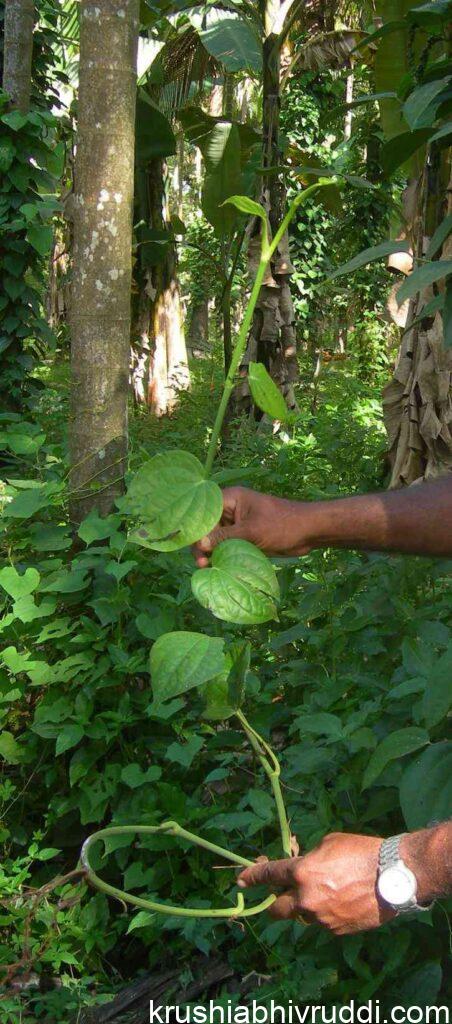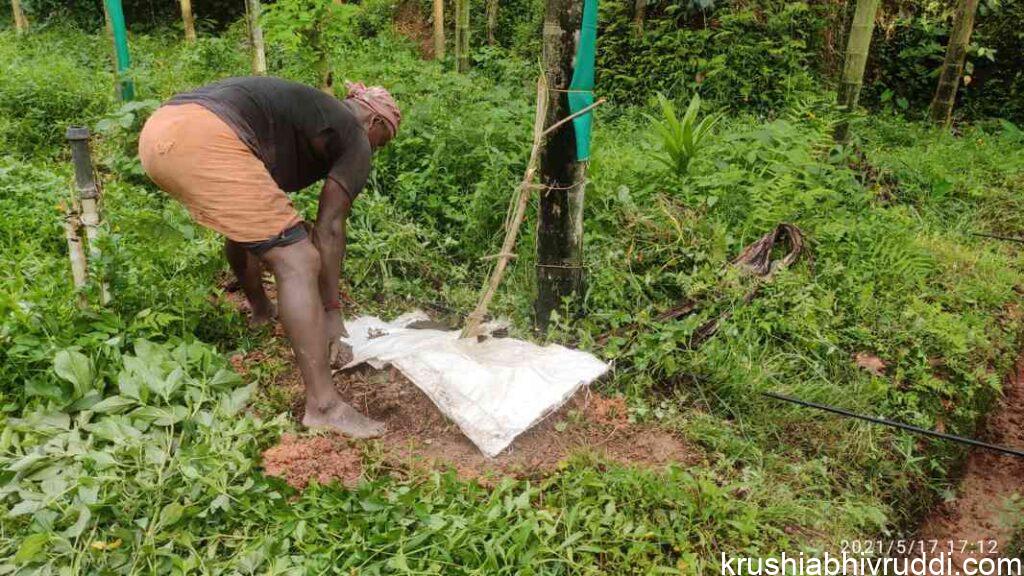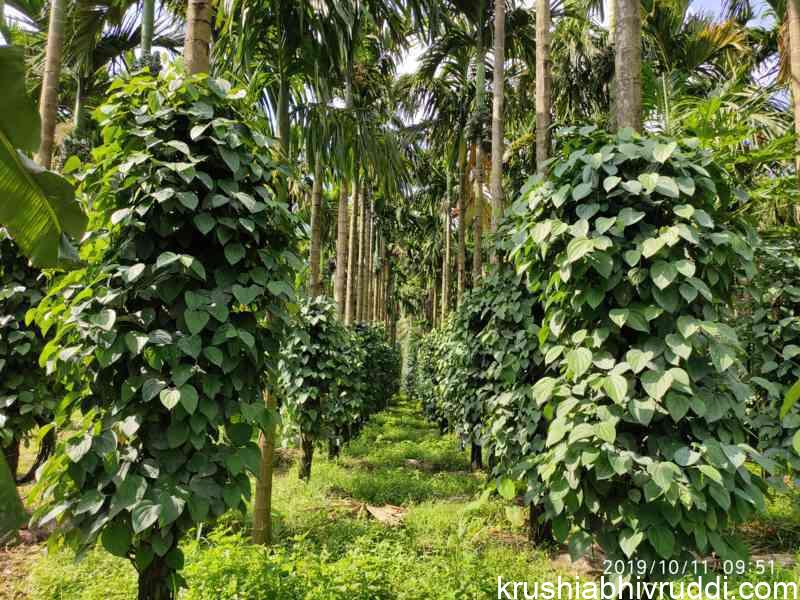Pepper planters prefer runner shoots for crop propagation in monsoon commencing season. Here we explain the best method of planting techniques.
Pre monsoon period is the ideal time for plant its runner shoots. This is the age old practice followed by our farmers. Rooted plants are the recent development. Direct planting of runner shoot cuttings is the good method of propagation. Runner shoots are nothing but few buds emerging from the basal nodes develop into shoots which creep on the ground. Here depending upon the climate, survival percentage is above 50%. Main advantage of this method includes no transport cost, our own planting material, can select disease free planting material and also good growth. So this method is accepted by farmers. Runners can be cut into small pieces with two to seven nodes for planting.

Why pre monsoon is good:
- During pre monsoon soil condition is favourable to initiate the root development.
- Moderate warm soil along with moist condition is ideal for root development.
- Cloudy weather and partial rain shower prevents drying of planted cutting.
- It will develop roots in few days.
- After the rain starts soil temperature automatically falls which will results in rotting of the cuttings.
- So pre monsoon period is ideal for planting either directly in the field or after keeping in the nursery.
How to plant?

- First step is selection of disease free planting material.
- Usually healthy mother plant is full of dark green leaves, spurting new leaflets and growth of runner shoots.
- If leaves are less, yellowish in colour and vigour is less it is considered as unhealthy plant.
- Avoid such unhealthy plant to select the runner shoots.
- After cutting the runner shoots immediately it should be taken to plant in the field.
- If there is a chance of exposure to direct sunlight, cuttings should be covered by wetted gunny bags.
- It helps to prevent the shrinking of vine.
Method of planting:

- Dig the pit far from the high root penetration area of support plant.
- There was no recommended size for pit making.
- 1X1 feet size diameter and ½ feet depth is enough.
- Because the pepper vines have hairy type roots, it penetrates the loose soil after its growth.
- First put 2-3 inches of fertile sterilized soil (half burnt soil SUDUMNNNU) or well decomposed compost is layered.
- On this bed, we have to put pepper vine in circle type.
- Minimum 3-4 nodes are covered by soil media.
- It helps to penetrate the roots well.
- Then put again sudumannu or compost upon the vine.
- Cover full pit and make the base slant type.
- Before planting all leaves should be removed because it requires more nutrients.
- There is no supply of nutrition from root system.
- Because roots are not yet emerged.
- If we remove the leaves it saves nutrition requirement to leaves.
- The survival percentage is more. Suppose leaves are not removed, themselves wither off without getting enough water and mineral nutrients.
- Withered leaves are usually get infected by fungus because fungal pathogens grow very well in any decomposing organic material.
- To prevent the disease incidence, before planting leaf removal is the best practice.
- After 10-15 days, new bud will emerge and leaves formation takes place.
- When planting avoid the direction of water dropping place of support tree.
After plantation the base should be covered by plastic mulch to prevent soil contact to the shoot. If soil particles touches the growing shoot, there is a chances of fungal infection. Mulching also helps to control soil erosion and maintain necessary temperature for the good growth.
- One more advantage of covering the base is to prevent the weed growth.
- Some wild creepers grow along with pepper vine and there is a competition exist for the nutrition and pepper won’t get enough nutrients.
- Weeds may suppress the pepper vine growth.
- To avoid this, removal of weed periodically is very much essential.
- It is laborious. So it is recommended to cover the base with mulching sheet
- . In first year shade should be maintained. By DR. RAJESHWARI KR











